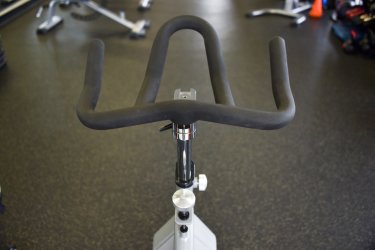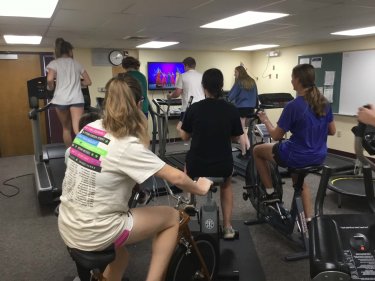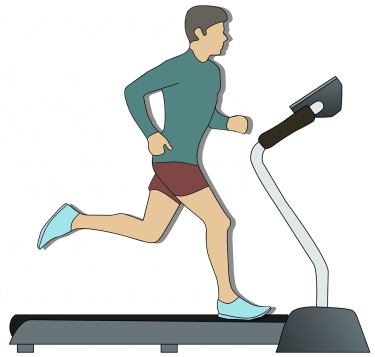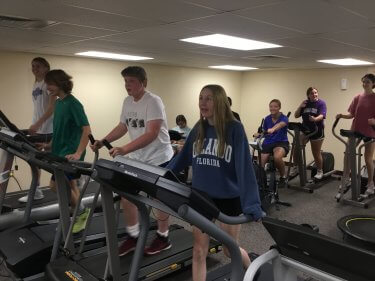(3 Minute Read)
For the past four years, I continually had students ask if we could have a class where they could work on cardiovascular conditioning instead of lifting weights. At our small rural high school in Kansas, we offer Lifetime Conditioning and Sports Conditioning classes. The classes are very popular, but based on student interest there was an immediate need for a way to teach cardio. The dilemma we faced was where this cardio room would be in our school and how we could afford and acquire machines needed to offer cardio as another class.

After attending a Wellness Committee meeting at our school and discussing with faculty and staff on how to improve employee wellness, it struck me that we could meet both needs with a new cardio room. I knew to ask the school to build a facility was not going to happen, so I proposed the next best thing. I told the superintendent that if he would supply me with a room at the high school I would make sure to fill it with free, donated equipment without any cost to the district. He looked at me like I was crazy, but I was more than willing to accept the challenge.

The first step was to ask all the district faculty if they had and any bikes, ellipticals, or treadmills that were in good working condition that they would be willing to donate. Second, we asked prominent members of the community if they could help us spread the word that we were looking for donated equipment. The last thing we did was put ads on Craigslist explaining exactly what we wanted to do with the free-will donations. We explained that the equipment would be used for our high school cardio room and the donation given could be used as a tax write off. We even offered to come to their house and pick up the equipment. I was careful to explain that I was a school representative and included the school phone number if they wanted to confirm we were legitimate. Communication with our school administration was important throughout the process.

We started out with one treadmill, one elliptical and a couple of bikes, but we continued to add one piece of equipment every month or so. Most of my work was done during the summer months, collecting equipment and arranging donation pick-ups. The first goal was to have 12 pieces of equipment ready for the start of the next school year. I asked the counselor if we could limit the class that first year to 12 students, to ensure each student would have equipment to use. Our high school principal even noticed the effort being put in to develop the cardio room and offered to buy us a TV to place in the room. The cardio room currently has 17 pieces of equipment in good working condition and we had 17 students enrolled in the class this past semester.

This is my 36th year of teaching Physical Education and this class gives me so much joy to see the students preparing for the real world by investing in themselves. One student made the following comment in regard to the new cardio room, “The conditioning room is extremely beneficial to everyone. Both students and teachers are capable of enjoying this facility. I have personally been able to use it on multiple occasions through class and after school. It is such an amazing way to stay in shape after school for those who are not in sports. It allows students to use different machines to stay in shape and maintain a healthy lifestyle.”
Instead of collecting dust and hanging clothes, the recycled equipment has found a home in our new cardio room. Don’t wait for opportunities to come your way, if we can accomplish this at a small rural high school in Kansas – so can you.

Kudos to Pat!!! A terrific initiative! Way too many high school phyla education have morphed into strength conditioning for primarily the schools’ athletic teams. So far as I can tell, they are the only ones who actually have daily “physical education” for four full years (if they want to play on their team, that is).
Thanks for sharing this excellent success story!
Hans van der Mars